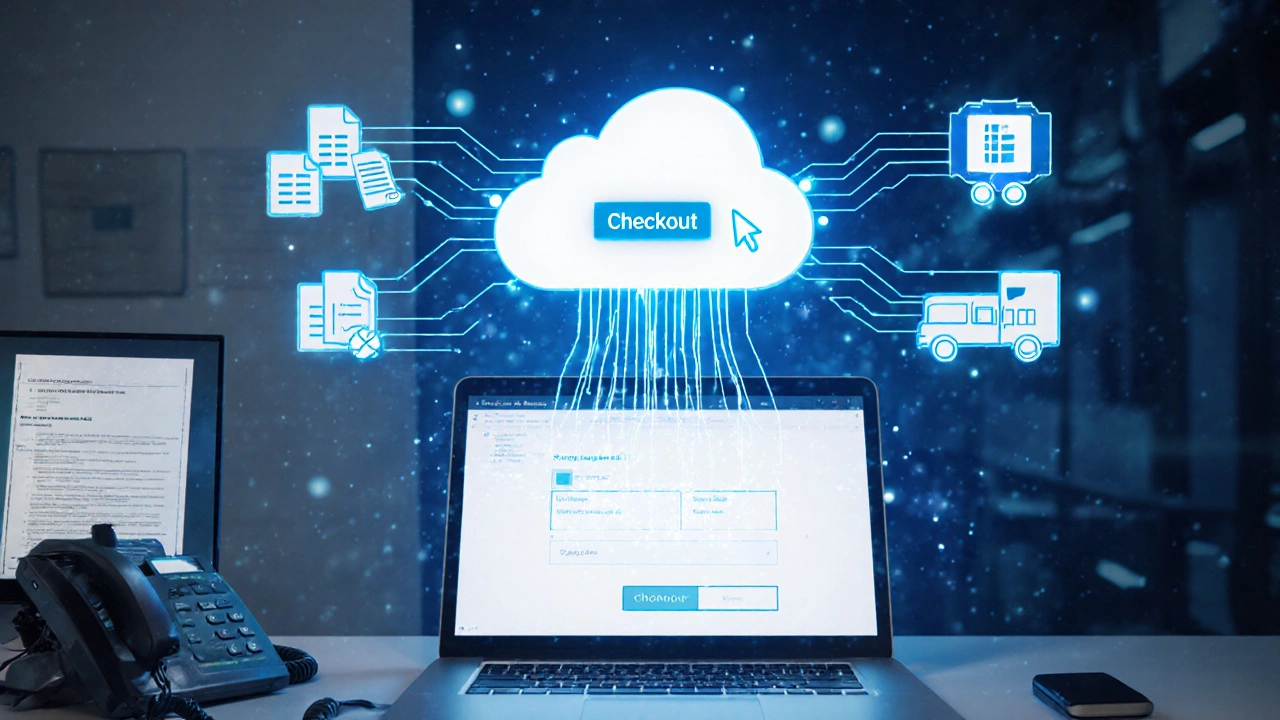Digital Logistics: How Tech is Changing Delivery & Warehousing
Ever wonder why your online order arrives faster than ever? The secret is digital logistics – the blend of software, data and connectivity that powers every step of the supply chain. From a warehouse robot stacking pallets to an AI‑driven route that avoids traffic jams, technology is turning traditional logistics into a real‑time, data‑rich operation.
What is Digital Logistics?
In plain terms, digital logistics means using digital tools to plan, execute and monitor the movement of goods. Instead of paper sheets and phone calls, companies rely on cloud platforms, mobile apps and sensors. These tools give you live visibility: you can see a truck’s location, a pallet’s temperature and a delivery’s estimated time of arrival right from your phone.
Why does it matter? Because visibility cuts mistakes. When a warehouse knows exactly which SKU is low, it can trigger an automatic reorder. When a driver gets a real‑time traffic alert, the package lands on the customer’s doorstep on time. The result is fewer delays, lower costs and happier customers.
Key Tools Shaping the Future
Warehouse Management System (WMS) – This software tracks every item from receipt to shipment. Modern WMS adds barcode scanning, AI slotting (which tells you the best place to store each product) and integration with e‑commerce platforms, so orders are picked and packed with minimal steps.
Transportation Management System (TMS) – TMS plans routes, books carriers and calculates the cheapest way to move freight. With AI, it can re‑optimize routes on the fly if weather or traffic changes, saving fuel and time.
Real‑time Tracking & IoT Sensors – Small devices attached to pallets or containers send temperature, humidity and shock data to the cloud. If a cold‑chain shipment warms up, the system flags it instantly, letting you act before the product spoils.
Automation & Robotics – From conveyor belts that sort packages to autonomous forklifts that move pallets, robots reduce manual labor and speed up processing. They work 24/7, keep errors low, and free human staff for higher‑value tasks like customer service.
Data Analytics & AI – All the data collected—order volumes, delivery times, carrier performance—feeds into analytics dashboards. AI spots patterns, predicts demand spikes and suggests inventory adjustments, so you’re never caught off guard.
Putting these tools together creates a seamless flow: an online order triggers the WMS, which tells the TMS the best carrier, while IoT sensors keep the shipment safe, and AI dashboards show you the whole picture. The entire process runs like a well‑orchestrated playlist, with each piece playing at the right time.
If you’re new to digital logistics, start small. Pick one pain point—maybe late deliveries—and trial a simple tracking app. Measure the improvement, then add a WMS module or a basic TMS. Scaling gradually keeps costs under control while you build confidence.
Bottom line: digital logistics isn’t just trendy jargon; it’s the engine that drives faster, cheaper and more reliable shipping. Embrace the technology, watch the data, and let automation do the heavy lifting. Your customers will notice the speed, and your bottom line will feel the boost.
How Does E-Logistics Work? A Simple Guide to Digital Supply Chains
Learn how e‑logistics turns orders into a seamless digital flow. Discover core tech, benefits over traditional methods, a starter checklist, and FAQs.
Read MoreLogistics Profitability: How Much Can You Really Make?
Wondering if logistics is actually profitable? This article dives into the real numbers, breaking down what impacts profit in logistics and how smart software choices make a difference. From hidden fees to automation wins, see what top performers are doing and why others struggle. Get simple facts, useful tips, and straightforward advice on boosting margins in this fast-moving industry. If you're weighing logistics investments, don't miss these insights.
Read More
